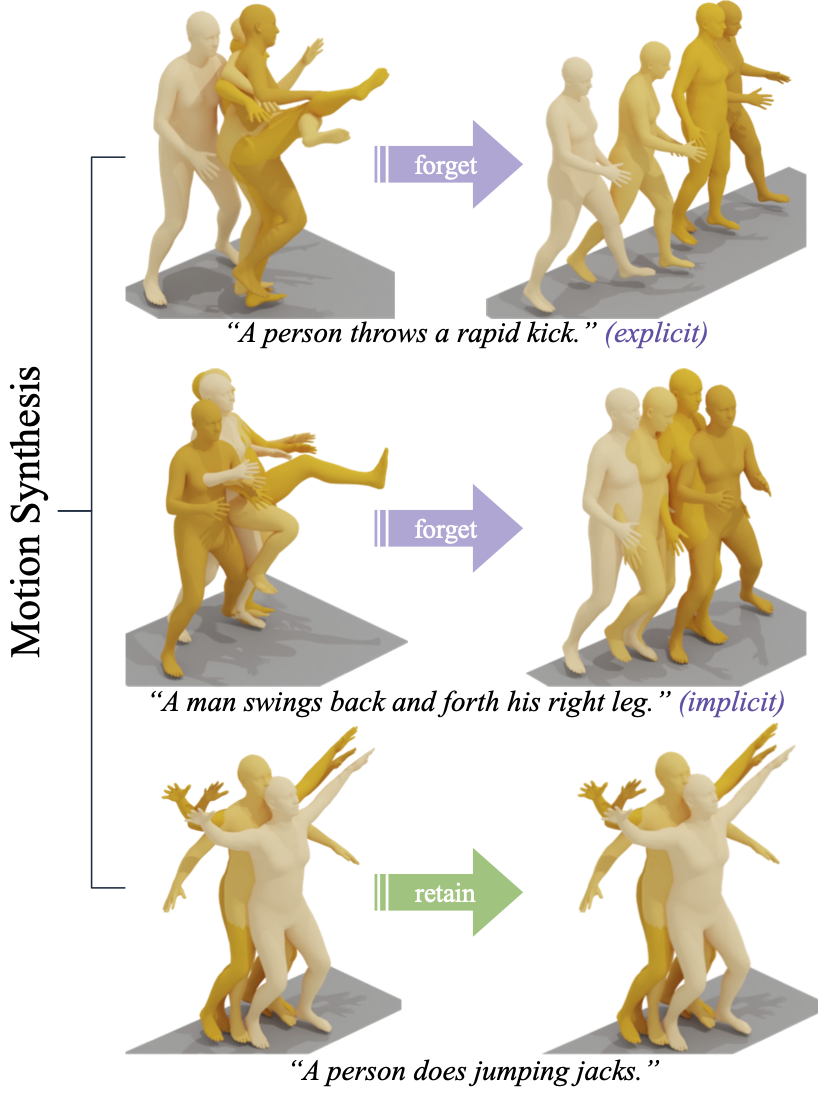Human Motion Unlearning
arXiv preprint
Edoardo De Matteis, Matteo Migliarini, Alessio Sampieri, Indro Spinelli, Fabio Galasso

Abstract
We introduce the task of human motion unlearning to prevent the synthesis of toxic animations while preserving the general text-to-motion generative performance. Unlearning toxic motions is challenging as those can be generated from explicit text prompts and from implicit toxic combinations of safe motions (e.g., "kicking" is "loading and swinging a leg"). We propose the first motion unlearning benchmark by filtering toxic motions from the large and recent text-to-motion datasets of HumanML3D and Motion-X. We propose baselines, by adapting state-of-the-art image unlearning techniques to process spatio-temporal signals. Finally, we propose a novel motion unlearning model based on Latent Code Replacement, which we dub LCR. LCR is training-free and suitable to the discrete latent spaces of state-of-the-art text-to-motion diffusion models. LCR is simple and consistently outperforms baselines qualitatively and quantitatively.
Forget Examples
Given a prompt describing a toxic action, we demonstrate how our LCR approach effectively unlearns it while preserving smoothness and motion realism.
Prompt: "A man kicks with force."
MoMask Dr
Base MoMask
LCR
UCE
RECE
Prompt: "A man punches forward violently."
MoMask Dr
Base MoMask
LCR
UCE
RECE
Complex Motions
It's particularly remarkable that the generated motions are mostly identical to the original model, and that LCR is capable of erasing only the unsafe part of the motion, without altering the rest.
Prompt: "A man does a run-up to kick something lying on the ground."
Base MoMask
LCR
UCE
RECE
Prompt: "A man stands up from the ground and then kicks with force."
Base MoMask
LCR
UCE
RECE
Prompt: "A man punches and then kicks the enemy."
Base MoMask
LCR
UCE
RECE
Citation
If you find this work useful in your research, please cite our paper:
@misc{dematteis2025humanmotionunlearning,
title={Human Motion Unlearning},
author={Edoardo De Matteis and Matteo Migliarini and Alessio Sampieri and Indro Spinelli and Fabio Galasso},
year={2025},
eprint={2503.18674},
archivePrefix={arXiv},
primaryClass={cs.CV},
url={https://arxiv.org/abs/2503.18674},
}